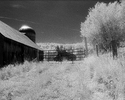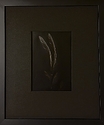Danner
Member
Reading 'The Negative' (A.A. 1981), Ansel describe metering for Zone I, shooting slight variations in exposure, then, using your standard developer, temperature, dilution, and agitation to develop the film. And, measuring density using a densitometer to find the one closest to 0.1 density, and that exposure determines the 'true' film speed.
I have no access to a densitometer, so here is another idea, and I wonder if it will work.
Meter a slightly texture surface at Zone V, and then shoot exposures for Zones 0 through X. Print the Zone V exposure to match a standard gray card in density (visual comparison), and then use that enlarger setting to print all 11 Zones. Look a the prints, particularly Zones I, II and VIII, IX, to see how the texture is rendered. Assuming its unbalanced (texture missing where it ought to be, or too much texture where it shouldn't be, then adjust exposure by changing the meter ISO setting to balance out the texture in the those extreme zones. And, when the texture becomes balanced, the ISO setting on the meter that worked is the true film speed.
Does this make sent, or an I nuts?
I have no access to a densitometer, so here is another idea, and I wonder if it will work.
Meter a slightly texture surface at Zone V, and then shoot exposures for Zones 0 through X. Print the Zone V exposure to match a standard gray card in density (visual comparison), and then use that enlarger setting to print all 11 Zones. Look a the prints, particularly Zones I, II and VIII, IX, to see how the texture is rendered. Assuming its unbalanced (texture missing where it ought to be, or too much texture where it shouldn't be, then adjust exposure by changing the meter ISO setting to balance out the texture in the those extreme zones. And, when the texture becomes balanced, the ISO setting on the meter that worked is the true film speed.
Does this make sent, or an I nuts?





